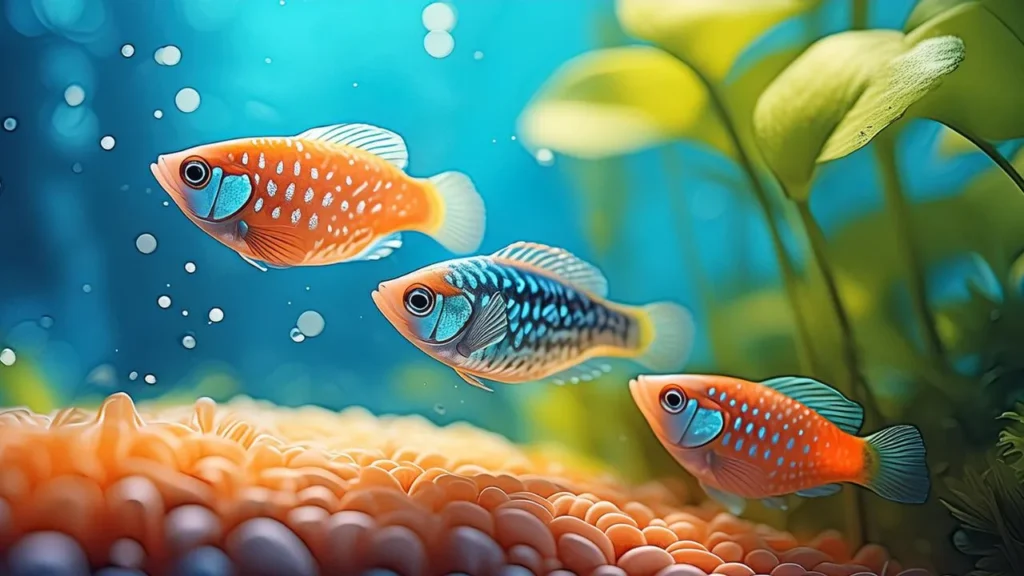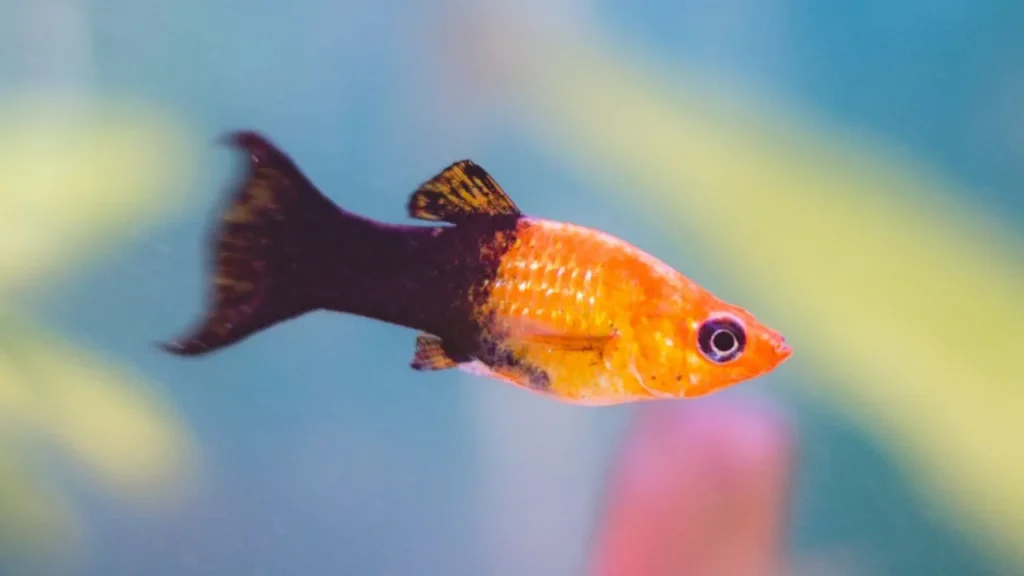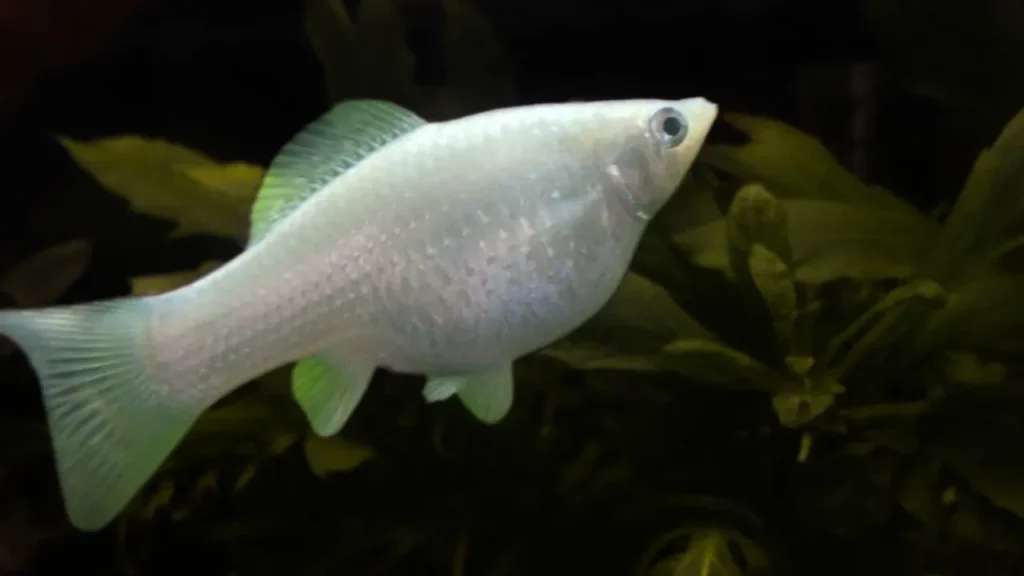Molly fish water temperature is a critical factor for aquarists globally who cherish these freshwater beauties for their vivid colors, resilience, and dynamic personalities. Successfully nurturing molly fish hinges on maintaining an ideal range of water temperature. This parameter is pivotal for their health, metabolism, and behavior, where even minor changes can lead to adverse effects. Through this comprehensive guide, we aim to explore the optimal molly fish water temperature, highlighting the significance of temperature consistency, the impact of extreme temperatures, and offer practical advice to ensure your mollies flourish in a stable and secure aquatic habitat.
Molly Fish Water Temperature Basics

Water temperature is a fundamental parameter in aquarium keeping, as it influences various aspects of fish biology, including metabolism, respiration, and immune function. For molly fish, the ideal water temperature range is between 72°F (22°C) and 82°F (28°C), with the sweet spot being around 78°F (25.5°C). This temperature range mimics the tropical conditions these fish naturally thrive in, ensuring optimal health, activity levels, and overall well-being.
Importance of Stable Water Temperature For Molly Fish
Maintaining a stable water temperature within the recommended range is crucial for molly fish. Sudden temperature fluctuations can cause significant stress, compromising their immune systems and making them more susceptible to diseases and parasitic infestations. Stable water temperature also promotes regular feeding patterns, breeding behavior, and overall activity levels, allowing your mollies to showcase their vibrant colors and energetic personalities.
Molly Fish Temperature Range In-Depth
While the ideal molly fish temperature range is well-established between 72°F (22°C) and 82°F (28°C), it’s essential to understand the nuances and potential variations within this range. Each degree of temperature can have a significant impact on various aspects of your mollies’ health and behavior, making it crucial to maintain the optimal temperature for their specific needs.
The Sweet Spot: 78°F (25.5°C) Within the recommended temperature range, 78°F (25.5°C) is often considered the sweet spot for molly fish. At this temperature, mollies exhibit their most vibrant colors, active behavior, and robust appetite. It closely mimics the tropical conditions they thrive in, promoting optimal metabolism, growth, and overall well-being.
Temperature Variations and Their Effects

While deviations from the ideal range can be detrimental, even slight fluctuations within the recommended range can have noticeable effects on your mollies:
- Temperatures between 72°F (22°C) and 76°F (24.5°C): At the lower end of the range, your mollies may become slightly less active and display subdued colors. Their metabolism and growth rates may slow down, and they may exhibit decreased appetite and breeding behavior.
- Temperatures between 78°F (25.5°C) and 80°F (26.5°C): This temperature range is considered optimal for most molly fish species, promoting vibrant colors, active swimming, and healthy appetites. Breeding behavior and fry development are also supported within this range.
- Temperatures between 80°F (26.5°C) and 82°F (28°C): As you approach the upper limits of the recommended range, your mollies may become more active and display increased respiration rates. However, prolonged exposure to these higher temperatures can lead to increased stress levels and a higher risk of bacterial and fungal infections.
It’s important to note that molly fish water temperature within the recommended range may slightly vary depending on the molly fish species. For example, some species like the Sailfin Molly may thrive better at the higher end of the range, while others like the Black Molly may prefer slightly cooler temperatures.
Ensuring Optimal Water Temperature
Maintaining the perfect molly fish water temperature range requires a combination of proper equipment, regular monitoring, and careful management. Here are some practical tips to help you achieve temperature perfection:

- Use a Reliable Aquarium Heater: Investing in a high-quality aquarium heater is essential for maintaining a consistent water temperature. Look for heaters with adjustable thermostats and automatic shutoff features to prevent overheating. Size the heater appropriately for your tank size, and consider using multiple heaters for larger aquariums to ensure even heat distribution.
- Adjust heater settings: If the water temperature deviates from the desired range, adjust the heater settings accordingly. Gradual adjustments of 1-2 degrees at a time are recommended to avoid shocking your mollies with sudden temperature changes.
- Install an Aquarium Thermometer: Regularly monitoring the water temperature is crucial. Place a reliable aquarium thermometer in a visible location to easily track temperature fluctuations. Digital thermometers with remote sensors offer accurate readings and can alert you to any temperature deviations.
- Manage Ambient Room Temperature: The ambient temperature of the room where your aquarium is located can influence the water temperature. Aim to keep the room temperature stable and within a comfortable range, avoiding exposure to direct sunlight or drafts from air conditioning or heating vents.
- Perform Partial Water Changes: Regular partial water changes not only help maintain water quality but can also assist in temperature regulation. When adding new water, ensure it is at the same temperature as the aquarium water to prevent sudden temperature shifts.
- Consider Aquarium Chillers: In warm climates or during hot summer months, an aquarium chiller may be necessary to keep the water temperature within the desired range. Chillers work by actively cooling the water, providing precise temperature control and preventing overheating.
- Perform partial water changes: Regular partial water changes can help maintain stable water temperatures, especially if the replacement water is at the same temperature as the aquarium water.
- Acclimate New Fish Properly: When introducing new molly fish to your aquarium, it’s crucial to acclimate them gradually to the new water temperature. This process involves floating the sealed bag or container with the new fish in your aquarium water for at least 30 minutes, allowing the temperatures to equalize before releasing the fish.
By closely monitoring and maintaining the optimal water temperature range for your molly fish, you’ll ensure they remain healthy, vibrant, and display their natural behaviors, making your aquarium a true showcase of these captivating freshwater inhabitants.
Factors Affecting Water Temperature
While maintaining the optimal water temperature range is essential, it’s also important to understand the factors that can influence temperature fluctuations in your aquarium. Some of these factors include:
- Aquarium Size and Volume: Larger aquariums tend to maintain a more stable temperature due to their greater water volume, while smaller tanks are more susceptible to temperature fluctuations.
- Lighting and Sunlight Exposure: Excessive lighting, especially direct sunlight, can cause water temperatures to rise rapidly. Ensure your aquarium is positioned away from direct sunlight and consider using aquarium shades or curtains to control light exposure.
- Aquarium Filtration: Efficient filtration systems can help regulate water temperature by removing excess heat generated by aquarium equipment and biological processes.
- Water Changes and Evaporation: Frequent water changes and evaporation can lead to temperature fluctuations, especially if the replacement water is not at the same temperature as the aquarium water.
- Aquarium Decorations and Substrate: Certain aquarium decorations and substrates can absorb and retain heat, potentially affecting water temperature. Dark-colored substrates and rocks are more prone to heat absorption.
Molly Fish Temperature Tolerance
While the ideal water temperature range for molly fish is well-established, it’s important to note that these hardy fish can tolerate slight deviations from the recommended temperatures. However, prolonged exposure to temperatures outside the optimal range can lead to stress, health issues, and potentially fatal consequences.

Can molly fish live in cold water?
Molly fish can survive in water temperatures as low as 68°F (20°C) for short periods, but prolonged exposure to these cooler temperatures can lead to reduced activity levels, decreased metabolism, and increased susceptibility to diseases.
Do molly fish need a heater?
In most cases, molly fish will require an aquarium heater to maintain the optimal water temperature range. While they can tolerate slightly cooler temperatures, a heater is essential for ensuring consistent and stable water temperatures, especially in cooler climates or during seasonal temperature changes.
Is sunlight good for molly fish?
While mollies can benefit from moderate lighting, direct sunlight is generally not recommended. Excessive sunlight exposure can cause rapid temperature fluctuations and promote algae growth in the aquarium, potentially leading to water quality issues.
Do molly fish like hard water?
Molly fish are known to thrive in moderately hard to hard water conditions, as they originate from areas with high mineral content. However, it’s essential to maintain stable water parameters, including pH levels, to ensure their overall well-being.
Do mollies need salt water?
While molly fish are freshwater species, they can tolerate and benefit from the addition of aquarium salt (sodium chloride) to their water. Small amounts of aquarium salt (1-2 teaspoons per 5 gallons) can aid in disease prevention, promote growth, and enhance coloration. However, it’s crucial not to overdo it, as excessive salt levels can be detrimental.
Molly Fish pH Level
Molly fish are adaptable to a wide range of pH levels, but they generally prefer water with a slightly alkaline pH between 7.2 and 8.2. Maintaining a stable pH within this range is essential for their overall health and well-being.
Conclusion
Achieving the perfect water temperature range for molly fish is a delicate balance, but one that is crucial for their survival and thriving. By understanding the importance of temperature stability, the effects of temperature extremes, and implementing practical temperature management techniques, you can create an optimal environment for your mollies to showcase their vibrant colors and energetic personalities.
Remember, temperature is just one aspect of successful molly fish keeping. Ensuring proper water quality, a balanced diet, and a well-maintained aquarium are equally important factors in providing a healthy and comfortable home for these captivating freshwater inhabitants.
By following the guidelines outlined in this survival guide, you’ll be well on your way to becoming a master molly fish keeper, ensuring your aquatic companions thrive and delight you with their lively antics for years to come.
You May Like:
How To Tell If Molly Fish Is dying.
Do Molly Fish Give Live Birth?

